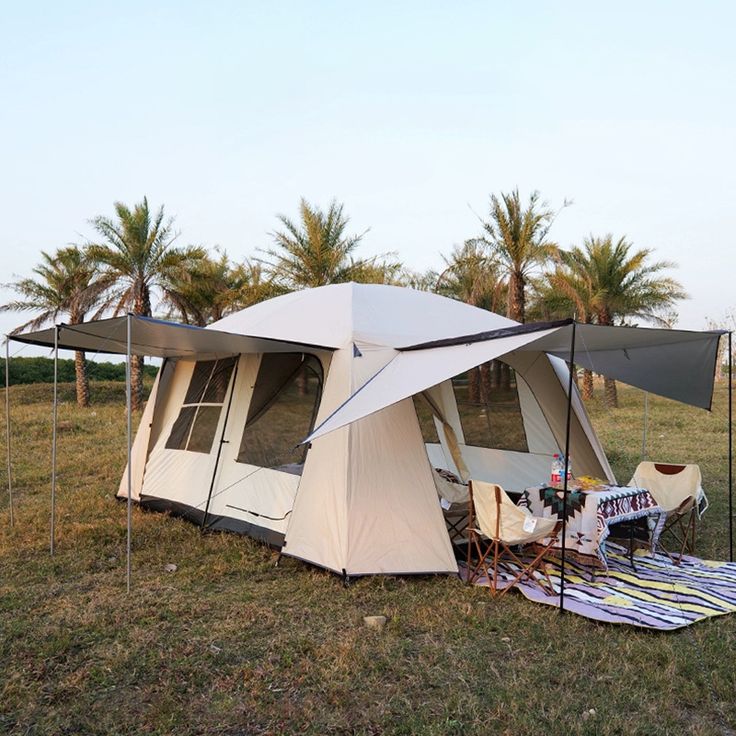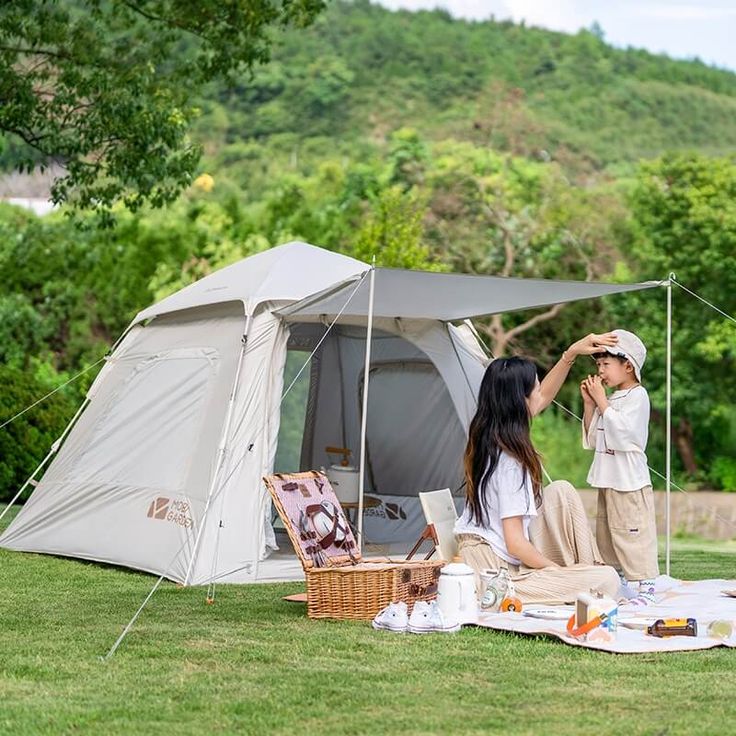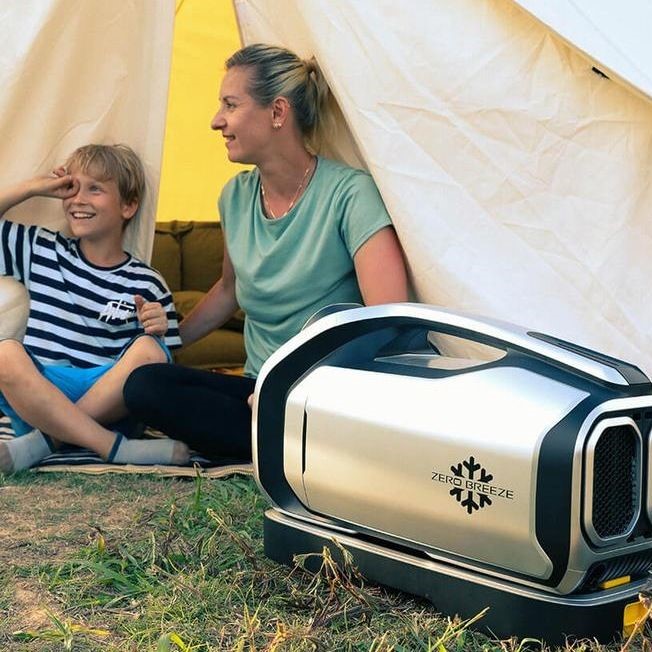Introduction: Why Keeping Your Tent Cool Matters
When you’re out camping, especially during the hot summer months, protecting yourself from the heat can be a challenge. This is where knowing how to keep tent cool in summer becomes crucial for a pleasant experience. The interior of tents can reach unbearable temperatures without the right techniques and gear. Not only can heat lead to discomfort, but it can also disrupt sleep, hydration, and overall enjoyment of your outdoor adventure. Therefore, it’s beneficial to explore various strategies to keep your tent comfortable during sweltering days.
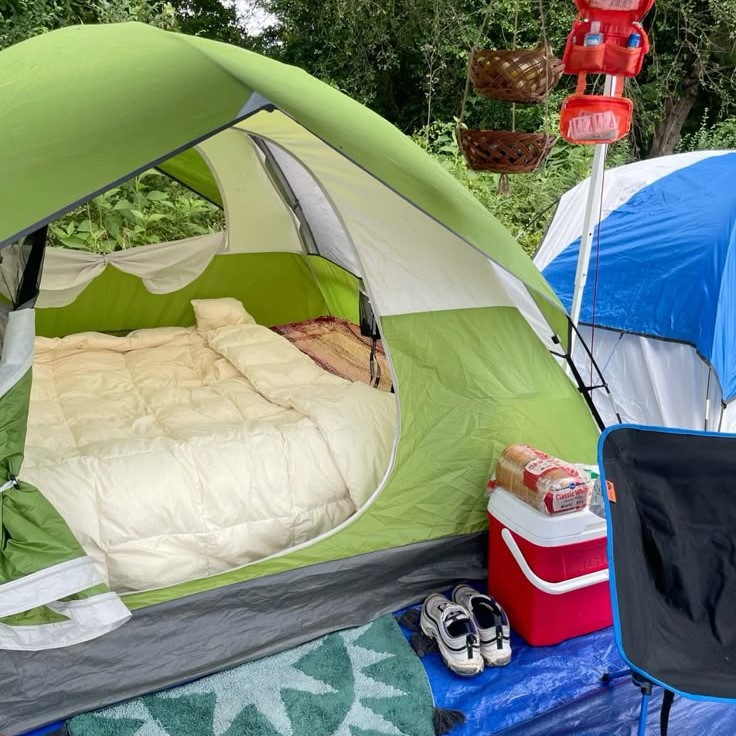
Essential Gear to Keep Your Tent Cool
Summertime camping calls for smart gear choices. Let’s look at some essentials to keep your tent cool.
Portable Fans
Portable fans are a camper’s best friend in hot weather. They provide essential airflow and comfort inside your tent. Opt for battery-powered or rechargeable models for convenience. Make sure to position fans towards sleeping areas for maximum effect.
Reflective Tarps and Sun Shades
Reflective tarps and sun shades repel sunlight, reducing the heat your tent absorbs. Drape them over or beside your tent to create a cooler space. This can dramatically lower the temperature inside your tent, making it a more comfortable retreat.
Rechargeable Air Conditioners
If you’re looking for a more high-tech solution, consider a rechargeable air conditioner. They can be a bit more costly and bulkier but are quite effective in cooling small spaces like tents. These units often come with USB charging capabilities, ensuring you can keep them powered throughout your trip.
Maximizing Natural Ventilation
When thinking about how to keep your tent cool in summer, natural ventilation plays a crucial role. Here’s how you can amplify the breeze and maintain a cooler atmosphere inside your tent.
Choosing the Right Tent with Ventilation Features
Select a tent designed for airflow. Look for options with multiple windows or mesh panels. These designs allow for cross-ventilation. Vents at the top also help, letting hot air escape while bringing in the fresh air.
Strategic Tent Placement for Airflow
Position your tent to catch the breeze. Set up your camp in a spot where natural winds flow. Orient the tent door or largest window facing the wind direction. This setup maximizes the cool air entering your shelter.
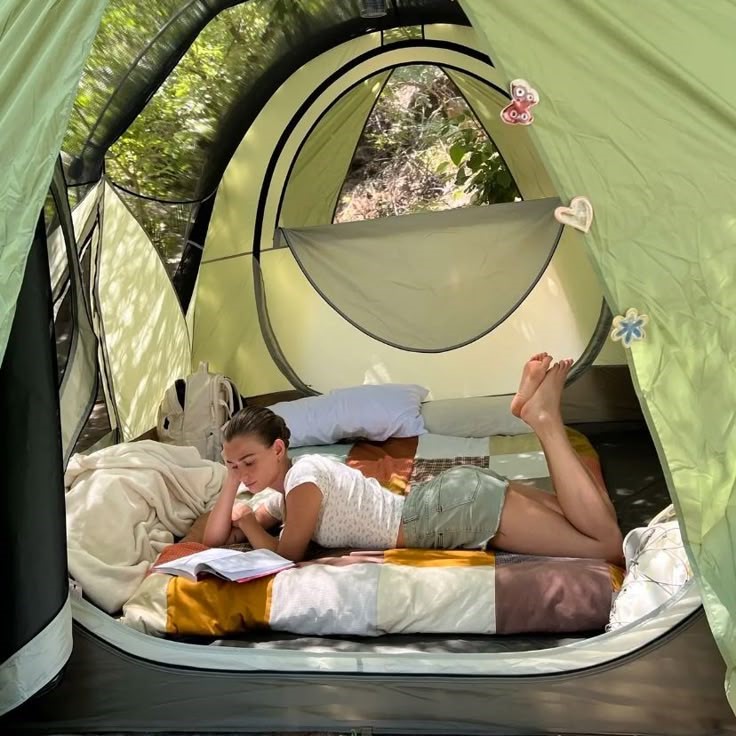
Time-Specific Vent Opening Techniques
Open vents and doors early in the mornings or late in the evenings. During these times, the air outside is cooler. By timing your vent openings, you can draw in this naturally cooler air and reduce tent temperatures.
Utilizing Cooling Accessories
Another effective way to beat the heat during your summer camping trips is by using cooling accessories. These items can provide immediate relief from the high temperatures and are easy to incorporate into your camping setup.
Ice Packs and Frozen Water Bottles
Keep ice packs or frozen water bottles handy. These serve as a quick cooling solution when placed inside your tent. Rest them against your body or in your sleeping area for a refreshing chill. As they melt, they double as a cold water source.
Cooling Towels and Blankets
Special cooling towels and blankets are designed to retain coolness. Wet them, wring them out, and drape them over your skin. The evaporative effect of these accessories can significantly reduce your body temperature, therefore, cooling you down quickly.
Battery-Powered Misters
Battery-powered misters are a great way to keep cool and are especially refreshing on a hot day. These devices spray a fine mist of water that helps bring down body heat. Using misters inside or around your tent can create a cool zone for relaxation. Remember to use the keywords, ‘how to keep tent cool in summer’ efficiently and sensibly. With these accessories, managing the summer heat while enjoying your camping adventure becomes a breeze.
Hydration Tips for Staying Cool
Staying hydrated is essential for managing the summer heat while camping. Proper hydration is crucial for your body’s natural cooling system and can significantly enhance your camping experience.
Importance of Staying Hydrated While Camping
- Understanding Water Loss: When camping in hot weather, your body loses a significant amount of water through sweat. This natural process is the body’s way of regulating temperature, but excessive sweating can lead to dehydration if not properly managed. Understanding the dynamics of water loss is the first step in ensuring you stay hydrated.
- Risks of Dehydration: Dehydration can lead to various heat-related illnesses such as heat exhaustion or heat stroke. Symptoms can include dizziness, confusion, weakness, and extreme fatigue. By keeping water intake high, you reduce the likelihood of these health issues and bolster your immune system, ensuring enjoyable camping experiences.
- Body Temperature Regulation: Hydration is not only about quenching your thirst; it plays a vital role in regulating your body temperature. Sufficient water intake helps maintain normal body functions and promotes effective circulation. This is essential for cooling mechanisms, which can help keep both you and your tent cooler during those sweltering summer days. Remember, staying hydrated contributes to the overall strategy of “how to keep tent cool in summer,” as it directly affects your personal comfort.
Best Practices for Water Storage and Consumption
- Bring an Adequate Supply: Always pack more water than you think you’ll need for your camping trip. Estimating water needs can be difficult, and it’s better to have extra than to find yourself running short. As a general rule, aim for at least two liters of water per person per day, but increase this amount during high heat or vigorous activities.
- Utilize Insulated Containers: Use insulated water bottles or containers to keep your water cool throughout the day. Cold water is not only more refreshing, but it also encourages you to drink more. If possible, fill your containers with ice before your trip; this will help maintain a lower temperature longer and provide you with cool drinks during the heat of the day.
- Sipping vs. Gulping: Try to sip water throughout the day rather than consuming large amounts in a single sitting. Smaller, regular sips will keep your hydration levels stable, helping your body absorb and utilize the water more effectively. Set reminders on your watch or phone to take water breaks if necessary, especially when you’re engaged in activities.
- Consider Electrolytes: When spending long hours in the heat, your body loses not just water, but also vital electrolytes through sweat. Consider adding electrolytes to your water, either through commercial electrolyte tablets or natural sources like coconut water.
- Listen to Your Body: Pay attention to your body’s signals. If you begin to feel thirsty, don’t wait to drink; make it a habit to take sips regularly. Also, look out for any signs of dehydration, such as dry mouth, dark urine, or decreased energy levels. Adjust your water intake based on your activity level and the heat of the day to maintain optimal hydration.
Avoiding Heat Buildup During the Day
To maintain a cool tent during your summer camping trips, focusing on prevention is just as crucial as employing various cooling methods. By implementing thoughtful strategies throughout the day, you can significantly reduce heat accumulation within your temporary shelter.
Limiting Sun Exposure to the Tent
- Choose a Shady Campsite: One of the most effective ways to avoid heat buildup is to select a campsite that offers natural shade. Look for spots located under trees or near large rocks that can block sunlight from directly hitting your tent. The shade provided by these natural elements helps to keep your tent cooler throughout the day.
- Use Reflective Tarps: If you can’t find a shaded area, consider using reflective tarps to create your own shade. Hanging a tarp over your tent can reduce the impact of direct sunlight. Make sure to position the tarp correctly so that it blocks the sun during the hottest parts of the day, further protecting your tent from the sun’s intensity.
- Consider Tent Color and Material: Your tent’s color and material also play a significant role in heat absorption. Lighter-colored tents reflect more sunlight compared to darker ones, which absorb heat. When selecting your tent, opt for materials that are designed to keep the interior cooler and have insulation properties to resist heat buildup.
Timing Activities to Avoid Midday Heat
- Engage in Morning or Evening Activities: Adjusting your daily activities to align with cooler parts of the day can greatly enhance your comfort. Consider scheduling strenuous activities, like hiking or setting up camp, for early morning or late afternoon when temperatures are generally lower. This not only helps you avoid excessive heat but also makes your experience more enjoyable.
- Take Breaks During Peak Heat: During peak heat hours, typically between 10 AM and 4 PM, take the time to relax and unwind. Bring along a good book, play card games, or simply enjoy the natural surroundings in the shade. This is also an excellent opportunity to hydrate and recharge, preventing you from becoming overheated.
- Enjoy Water Activities: If you are camping near a body of water, take advantage of it during the hottest parts of the day. Swimming or wading in the water provides a refreshing break from the heat and keeps your body temperature down. This not only helps you stay cool but also adds an element of fun to your camping experience.
By implementing these strategies, you can effectively avoid heat buildup in your tent during summer camping, making it easier to create a comfortable environment regardless of the outside temperatures.
Campsite Selection for Optimal Coolness
Choosing the right campsite is crucial for ‘how to keep tent cool in summer.’ Here’s what to consider for a cooler camping experience.
Evaluating Terrain and Tree Coverage
Look for a campsite with abundant trees. Trees provide natural shade and can significantly lower temperature around your tent. Aim for a spot with a dense canopy overhead. It blocks direct sunlight, keeping your site and tent cooler. Survey the land’s terrain, too. Elevated areas typically catch more breeze and might be cooler.
Proximity to Water Sources for Natural Cooling
Sites near water sources, like lakes or streams, often have cooler microclimates. The water helps to cool the air. If possible, set up your tent facing the water. The breeze coming off the water can create a natural, refreshing airflow through your campsite and tent.
Nighttime Strategies for a Cooler Tent
Even during summer, nighttime brings cooler temperatures. Use this to your advantage to keep your tent cool.
Making the Most of Cooler Night Air
At night, air temperatures drop, offering a natural cool down. First, open all vents and doors to let the cooler air in. If it’s safe, consider sleeping with the tent partially open. This ensures continuous airflow. Position portable fans to push the warm air out and draw in cool night air.
Appropriate Sleeping Gear for Summer Nights
Choose sleeping gear suited for warmth without overheating. Lightweight, breathable sleeping bags are ideal. Alternatively, use a cotton sheet or a sleeping bag liner instead of a bag. Lastly, sleep on top of your sleeping mat, not inside a bag, to minimize heat retention. ‘How to keep tent cool in summer’ is easier with the right gear and strategies.
Timing Outdoor Activities
Planning your outdoor activities around temperature fluctuations is essential in summer camping. The hottest part of the day typically occurs between 10 AM and 4 PM. To avoid heat exposure during this time, consider engaging in activities early in the morning or later in the evening. Not only does this keep you cooler, but it also allows you to enjoy pleasant temperatures. Use the adrenaline of morning hikes or evening stargazing as a method to escape the harsh afternoon sun. Staying strategic with your timing can contribute to overall camp comfort.
Conclusion
In summary, knowing how to keep tent cool in summer is crucial for enhancing your outdoor experience. By understanding the importance of tent placement, investing in quality camping gear, optimizing ventilation, and implementing some fun DIY solutions, you can create a comfortable camping environment even in high temperatures. Additionally, keeping yourself cool is vital and can enhance your outdoor enjoyment. With these strategies, you’ll be well-prepared and ready to face the heat, ensuring a memorable camping adventure for you and your companions. Summer camping doesn’t have to be uncomfortable; embrace these tips and prepare for your next outdoor escape!
